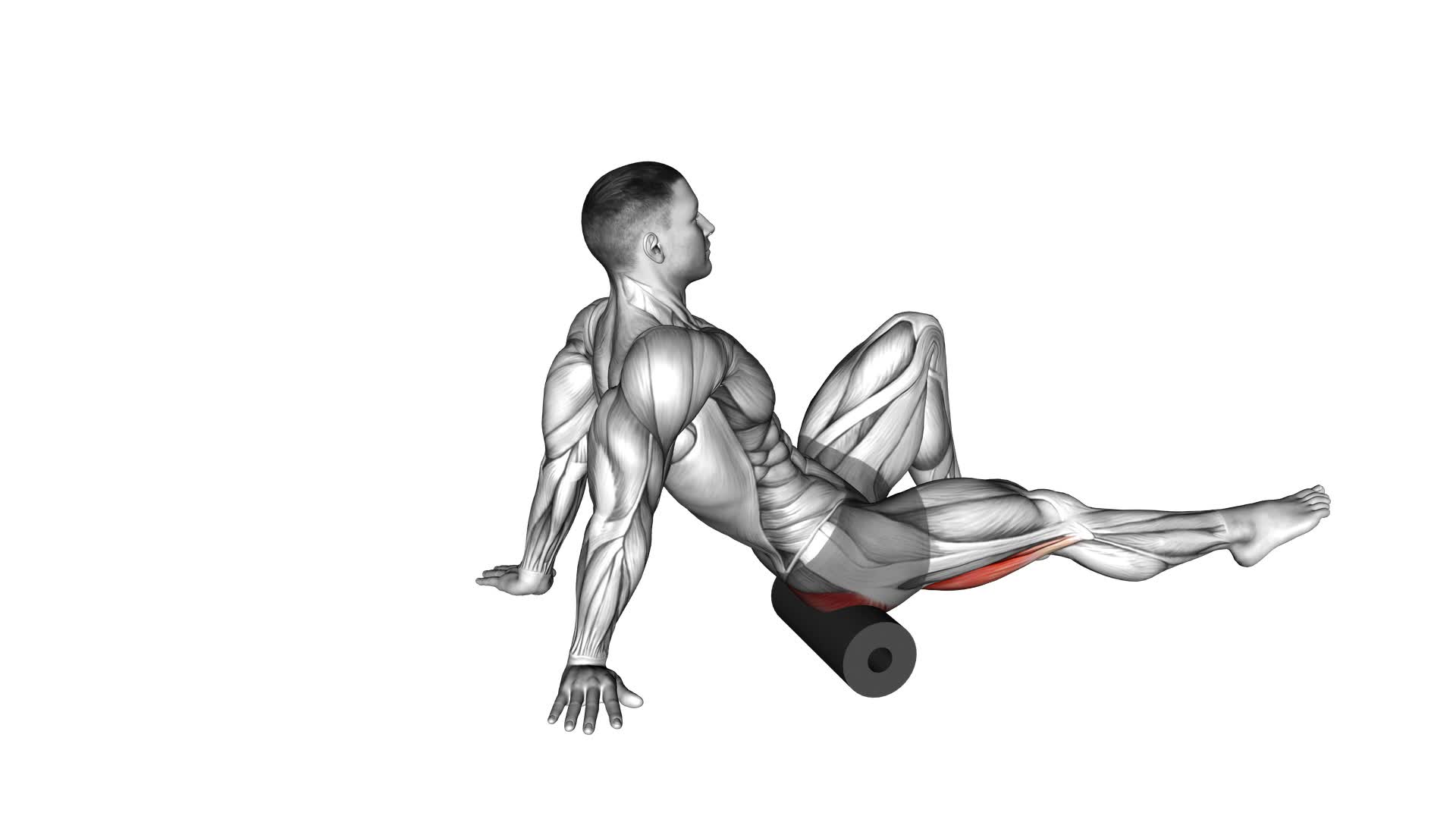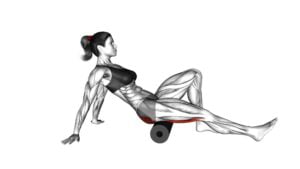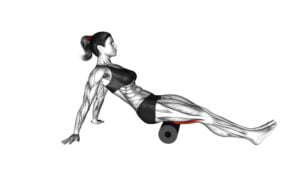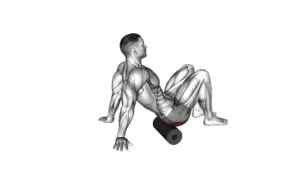Roll Hamstrings and Glute Sitting on Floor – Video Exercise Guide & Tips

Are you looking for a quick and effective exercise to target your hamstrings and glutes? Look no further!
Watch This Exercise Video
In this video exercise guide, we'll show you how to roll your hamstrings and glutes while sitting on the floor. You'll learn the proper form and technique, as well as common mistakes to avoid.
Plus, we'll provide modifications and progressions to help you challenge yourself.
Get ready to maximize your workout with this roll hamstrings and glute exercise!
Key Takeaways
- Increased flexibility in hamstrings and glutes
- Improved muscle activation in hamstrings and glutes
- Alleviates tightness and improves overall flexibility in lower body
- Strengthens and tones hamstrings and glutes
Benefits of the Roll Hamstrings and Glute Sitting on Floor Exercise
Experience increased flexibility and improved muscle activation by incorporating the Roll Hamstrings and Glute Sitting on Floor exercise into your fitness routine. This exercise provides numerous benefits of stretching for your hamstrings and glutes.
Stretching these muscles can help to alleviate tightness and improve overall flexibility in your lower body. By regularly performing this exercise, you can also target and activate the muscles in your hamstrings and glutes, helping to strengthen and tone them.
One of the great things about Roll Hamstrings and Glute Sitting on Floor exercise is that it can be easily modified to suit your individual needs and fitness level. You can adjust the intensity of the stretch by applying more or less pressure when rolling your hamstrings and glutes on the foam roller. Additionally, you can vary the angle of your legs to target different areas of your hamstrings and glutes.
For example, you can position your legs closer together to target the inner part of your hamstrings, or you can spread them wider to target the outer part.
Incorporating the Roll Hamstrings and Glute Sitting on Floor exercise into your fitness routine can provide you with a range of benefits. From increased flexibility to improved muscle activation, this exercise is a great addition to any lower body workout.
Remember to listen to your body and make any necessary modifications to ensure a safe and effective workout.
Equipment Needed for the Exercise
To perform the Roll Hamstrings and Glute Sitting on Floor exercise, you'll need a foam roller. Using equipment like a foam roller can provide additional support and enhance the effectiveness of your workout.
Here are some benefits of using equipment for this exercise:
- Increased Stability: The foam roller adds stability by providing a firm surface for you to sit on. This helps you maintain proper form throughout the exercise, reducing the risk of injury.
- Targeted Muscle Activation: The foam roller allows you to specifically target your hamstrings and glutes. By rolling back and forth on the roller, you can apply pressure to these muscles, helping to release tension and improve flexibility.
- Variations and Progressions: Using a foam roller opens up opportunities for variations and progressions of the exercise. For example, you can try single-leg rolls or add resistance by placing a weight on your hips. These variations challenge your muscles in different ways, promoting muscle growth and development.
Proper Form and Technique for the Roll Hamstrings and Glute Sitting on Floor Exercise
Using a foam roller for the Roll Hamstrings and Glute Sitting on Floor exercise gives you increased stability and targeted muscle activation. To ensure proper form and technique, start by sitting on the floor with your legs extended and the foam roller positioned under your hamstrings. Place your hands behind you for support.
Begin by rolling the foam roller up and down the back of your thighs, focusing on the areas that feel tight or tense. Maintain a slow and controlled movement, allowing the foam roller to apply pressure to the muscles. Avoid rolling directly over the bone or joints. As you roll, be mindful of any discomfort or pain. If you experience any sharp or intense pain, stop the exercise immediately.
Continue rolling for about 1-2 minutes, or until you feel a release in the muscles. Remember to breathe deeply throughout the exercise to help relax the muscles.
Common Mistakes to Avoid During the Exercise
To maximize the effectiveness of the Roll Hamstrings and Glute Sitting on Floor exercise, it's crucial to avoid these common mistakes:
- Using momentum: One of the most common mistakes people make during this exercise is using momentum instead of controlled movements. It's important to focus on engaging your hamstrings and glutes and avoid swinging your body to generate the movement. This will ensure that you're targeting the intended muscles and getting the most out of the exercise.
- Incorrect positioning: Another common mistake isn't positioning yourself properly on the floor. Make sure that your sitting bones are firmly grounded and your legs are extended straight out in front of you. This will help maintain stability and enable you to perform the exercise with proper form.
- Neglecting the stretch: Many people rush through the exercise without fully stretching their hamstrings and glutes. Remember to take your time and feel the stretch in these muscles as you roll back and forth. This won't only improve flexibility but also enhance the overall effectiveness of the exercise.
Modifications and Progressions for the Roll Hamstrings and Glute Sitting on Floor Exercise
Now let's talk about some modifications and progressions you can try for the Roll Hamstrings and Glute Sitting on Floor exercise.
If you're looking for alternative options, you can use a foam roller or a lacrosse ball to target your hamstrings and glutes.
To increase the difficulty level, you can add resistance bands or weights to challenge your muscles even more.
Alternative Exercise Options
You can modify and progress the Roll Hamstrings and Glute Sitting on Floor exercise with alternative options. Here are three variations and modifications you can try:
- Single-leg Roll: Instead of using both legs, try rolling one leg at a time. This increases the intensity and challenges your balance and stability.
- Resistance Band Roll: Place a resistance band around your feet and hold onto the ends. As you roll forward and backward, the resistance from the band adds an extra challenge to your hamstrings and glutes.
- Elevated Roll: Sit on an elevated surface, such as a bench or step, and perform the exercise. This increases the range of motion and intensifies the stretch on your hamstrings and glutes.
By incorporating these alternative exercises, variations, and modifications, you can target your hamstrings and glutes in different ways and keep challenging your muscles.
Now, let's move on to the next section about increasing the difficulty level.
Increasing Difficulty Level
To increase the difficulty level of the Roll Hamstrings and Glute Sitting on Floor exercise, incorporate these modifications and progressions.
- Add resistance by using a resistance band or ankle weights. This will increase the challenge for your hamstrings and glutes.
- Perform the exercise on an unstable surface, such as a stability ball or BOSU ball. This will engage your core muscles and improve your balance.
- Try performing the exercise with one leg lifted off the ground. This will further activate your glutes and challenge your stability.
- Increase the number of repetitions or the duration of each repetition to make the exercise more intense.
These advanced variations will help you continue to progress and improve your strength and stability.
Tips for Getting the Most Out of the Roll Hamstrings and Glute Sitting on Floor Exercise
To maximize the benefits of the roll hamstrings and glute sitting on floor exercise, incorporate these tips into your routine:
- Warm-up: Before starting the exercise, it's crucial to warm up your muscles. Perform dynamic stretches like leg swings and hip circles to increase blood flow and prepare your hamstrings and glutes for the workout.
- Maintain proper form: During the exercise, focus on maintaining proper form to maximize results and prevent injuries. Keep your spine neutral and engage your core. Avoid rounding your back or lifting your shoulders. This will ensure that the targeted muscles are effectively activated.
- Gradually increase intensity: If you find the exercise too easy, gradually increase the intensity by using a foam roller with more density or adding resistance bands. This will challenge your muscles and help you progress over time.
Frequently Asked Questions
How Many Repetitions and Sets Should I Do of the Roll Hamstrings and Glute Sitting on Floor Exercise?
For the roll hamstrings and glute sitting on floor exercise, it's important to consider the number of repetitions and sets. To determine this, you should listen to your body and start with a comfortable number that challenges you.
As you progress, you can gradually increase the repetitions and sets. Remember to focus on proper form and technique to avoid injury.
If you have any concerns or need exercise modification, consult a fitness professional.
Can I Do This Exercise if I Have a Knee Injury?
If you have a knee injury, it's important to consult with a healthcare professional before attempting any exercises. They can provide guidance on modified exercises or alternative stretches that are safe for your condition.
It's crucial to prioritize your recovery and avoid aggravating your injury further. Always listen to your body and follow the recommendations of your healthcare provider to ensure a safe and effective exercise routine.
How Long Should I Hold Each Stretch in the Roll Hamstrings and Glute Sitting on Floor Exercise?
To get the most out of the roll hamstrings and glute sitting on floor exercise, it's important to know how long to hold each stretch. The recommended duration for holding the stretch is about 20-30 seconds. This allows your muscles to fully relax and lengthen.
Aim for 2-3 sets of 10-15 repetitions for each leg. Remember to listen to your body and adjust the intensity as needed.
Can I Use a Foam Roller Instead of a Tennis Ball for This Exercise?
Yes, you can definitely use a foam roller instead of a tennis ball for the roll hamstrings and glute exercise. Using a foam roller has several benefits such as promoting exercise recovery and improving flexibility.
It allows for a larger surface area to target multiple muscles simultaneously. Additionally, there are different variations of the exercise that can specifically target certain muscles.
Is It Normal to Feel Some Discomfort or Tightness During the Roll Hamstrings and Glute Sitting on Floor Exercise?
Feeling discomfort or tightness during the roll hamstrings and glute sitting on floor exercise is normal. It indicates that your muscles are being stretched and worked. However, if the discomfort is intense or painful, you should modify the exercise to suit your fitness level.
Beginners can start with a foam roller instead of a tennis ball for a less intense sensation. Remember to avoid common mistakes like rolling too quickly or putting excessive pressure on the muscles.
Conclusion
In conclusion, the Roll Hamstrings and Glute Sitting on Floor exercise is a beneficial way to stretch and strengthen these muscle groups. With proper form and technique, this exercise can help improve flexibility, reduce muscle tension, and enhance overall lower body strength.
By avoiding common mistakes and following modifications and progressions, individuals can maximize the effectiveness of this exercise. Remember to focus on proper breathing and listen to your body's limitations to get the most out of this exercise.

Author
Years ago, the spark of my life’s passion ignited in my mind the moment I stepped into the local gym for the first time. The inaugural bead of perspiration, the initial endeavor, the very first surge of endorphins, and a sense of pride that washed over me post-workout marked the beginning of my deep-seated interest in strength sports, fitness, and sports nutrition. This very curiosity blossomed rapidly into a profound fascination, propelling me to earn a Master’s degree in Physical Education from the Academy of Physical Education in Krakow, followed by a Sports Manager diploma from the Jagiellonian University. My journey of growth led me to gain more specialized qualifications, such as being a certified personal trainer with a focus on sports dietetics, a lifeguard, and an instructor for wellness and corrective gymnastics. Theoretical knowledge paired seamlessly with practical experience, reinforcing my belief that the transformation of individuals under my guidance was also a reflection of my personal growth. This belief holds true even today. Each day, I strive to push the boundaries and explore new realms. These realms gently elevate me to greater heights. The unique combination of passion for my field and the continuous quest for growth fuels my drive to break new ground.







